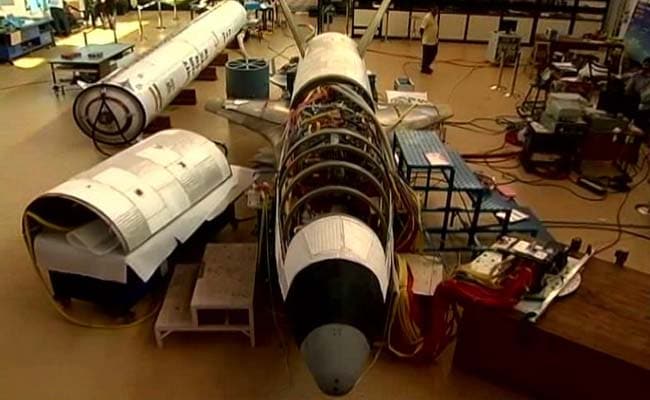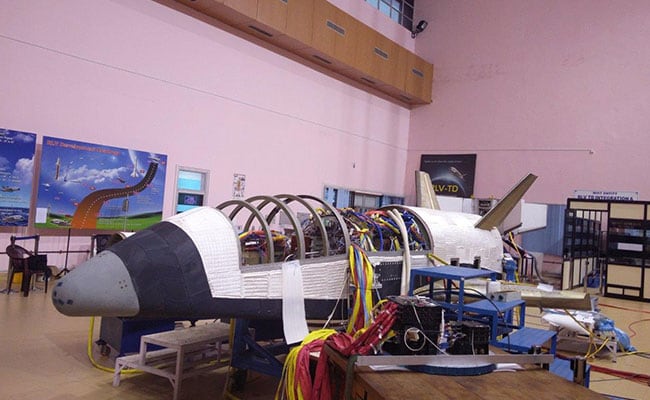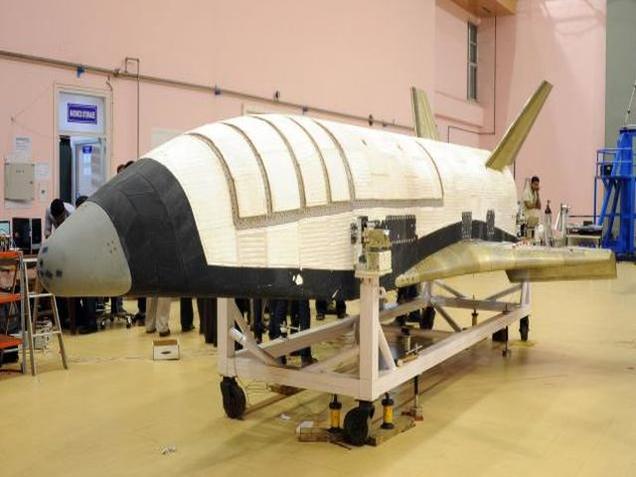Aerospace
ISRO Prepares for Launch of Indigenous Indian Space Shuttle..!

Indian Space Research Organization (ISRO) is all set to launch first-of-its-kind swadeshi (indigenous) space satellite launch vehicle, (RLV-TD), on May 23, from Sriharikota.
The 6.5 meter long re-usable Launch Vehicle – technology Demonstrator (RLV-TD) will weigh about 1.75 tons. The cost of this project is Rs 95 crore.
WATCH: Making of India’s space shuttle: The inside story
On being asked that what gave ISRO the confidence that it would succeed with a winged flight, Dr K Sivan, Director of the Vikram Sarabhai Space Centre (VSSC) in Thiruvananthapuram, told NDTV: “… How far our theoretical predictions are going to match with the real flight based on that we will be able to find what the right design is. Therefore, this data from RLV-TD’s launch is going to be used for configuring the real reusable launch vehicle.”




This will be the first time ISRO will fly a winged body and bring it back to land on make-shift runway in the Bay of Bengal. However, in further tests an undercarriage will be placed to make it land, possibly at Sriharikota.
“We have already identified the area where we are going to land this space shuttle at Sriharikota where a 5-km long runway will be made,” Mr Sivan said.
On this flight, he said, “the vehicle will not be recovered because this vehicle is not designed for recovery. Soon after landing it will break. Our aim is to generate data so during the flight itself continuous telemetry will come in, we will acquire it, and then the data will be used”.
The final RLV will be about 40 meters in length and will also be able carry Indian astronauts.
The step is being taken to try and reduce the cost of launching objects into space by as much as ten times.
Courtesy : NDTV
Liked it ..?
Share with your friends and family

Aerospace
Boeing Transfers Rocket Stage to NASA, Paving Way for Human Moon Mission

Boeing has achieved a significant milestone by providing NASA with the second core stage of the Space Launch System (SLS) rocket.
This crucial component, crafted at NASA’s Michoud Assembly Facility (MAF), is set to propel the Artemis II crew into lunar orbit, marking humanity’s return to deep space after a 50-year hiatus.
The monumental Boeing-built rocket stage, the largest element of the Artemis II mission, will embark on a journey aboard the Pegasus barge, traveling 900 miles to NASA’s Kennedy Space Center.
Comparison of two legendary aircraft B777x vs B747 aircraft:Click here
Upon arrival, it will be meticulously integrated with other essential Artemis II components, including the upper stage, solid rocket boosters, and NASA’s Orion spacecraft within the iconic Vehicle Assembly Building. This intricate integration process is a vital step toward the eagerly anticipated Artemis II launch, slated for 2025.
“Boeing-built products helped land humankind on the moon in 1969, and we’re proud to continue that legacy through the Artemis generation,” remarked Dave Dutcher, vice president and program manager for Boeing’s SLS program. “Together, with NASA and our industry partners and suppliers, we are building the world’s most capable rocket and paving the way to deep space through America’s rocket factory in New Orleans.”
NASA, Lockheed Martin Reveal X-59 Quiet Supersonic Aircraft:Click here
The delivery of Core Stage 2 marks a significant achievement in the evolution of the SLS rocket. Towering over 200 feet and powered by four RS-25 engines, this core stage, coupled with two solid-fueled booster rockets, will generate a staggering 8.8 million pounds of thrust. This immense power is crucial to launching Artemis II and future missions into the vast expanse of space.
The SLS rocket stands unparalleled in its capability to transport both crew and substantial cargo to the moon and beyond in a single launch. Its extraordinary capacity will facilitate the delivery of human-rated spacecraft, habitats, and scientific missions to destinations including the moon and Mars, ushering in a new era of space exploration.
-

 Travel1 week ago
Travel1 week agoAir India to Expand US Operations with Three New Routes After a Decade
-

 Travel2 weeks ago
Travel2 weeks agoWhy We Should Avoid These Stamps in a Passport
-

 Airlines1 month ago
Airlines1 month agoInvestigations Reveal Fake Chinese Titanium in Boeing and Airbus Jets
-

 Tech4 weeks ago
Tech4 weeks agoChina’s CATL Plans 1,800-Mile Electric Plane Launch by 2027
-

 Airport3 days ago
Airport3 days agoTop 10 Largest Airports in the World by Size
-

 Aerospace4 weeks ago
Aerospace4 weeks agoChina’s Fighter Jets Turn Wings into Autonomous Drones
-

 Airlines4 days ago
Airlines4 days agoAir India Rolls Out A350s for Delhi-New York JFK and Newark Routes
-

 Defence3 weeks ago
Defence3 weeks agoBoeing Enhances Chinook with New Engines and Block II Upgrades at $96 Million







